A-VIATOR
The A-VIATOR is the simple, safe, yet not obvious answer to a large number of operators. Up till now operators did not have any alternative than spending fortunes in very old gas guzzling twin engine antiquated aircraft or having to revert to less safe single engine turboprop aircraft.
The A-VIATOR is an economical non pressurized twin engine turboprop answering to a multiple array of needs from private/charter operations to advanced airborne surveillance and aerial work missions. The A-VIATOR design is derived from the smaller P68 Series and its legendary flight qualities have been maintained.
The fuselage has been stretched to allow more space on board and 2 turbine powerplants replace the piston engines allowing the aircraft to operate in areas where AvGas is not readily available.
The retractable landing gear improves the already excellent speed characteristics, and the stretched fuselage allows a more efficient use of cabin space, resulting in a maximum seating capacity of 9 passengers and 2 pilots.

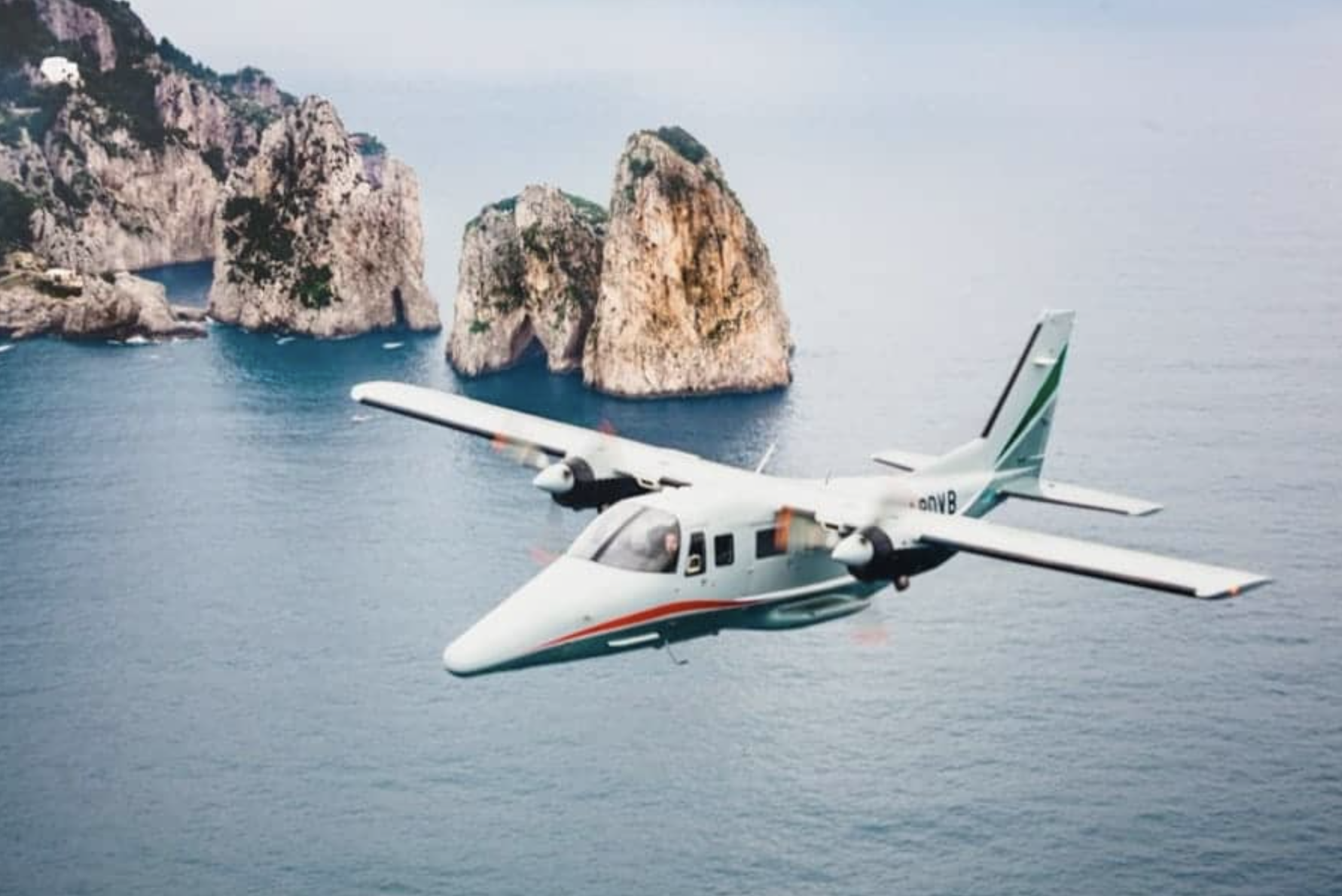
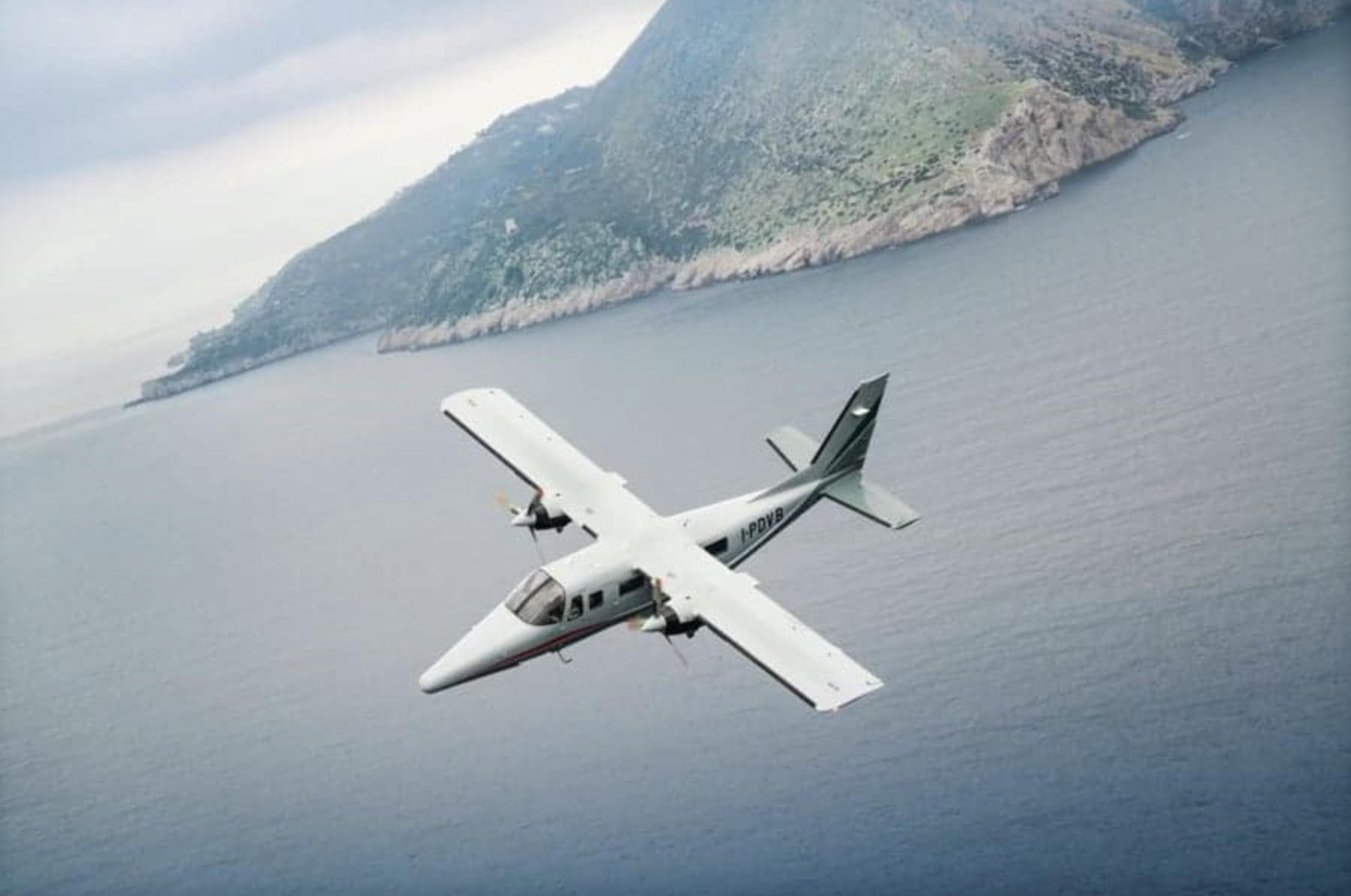

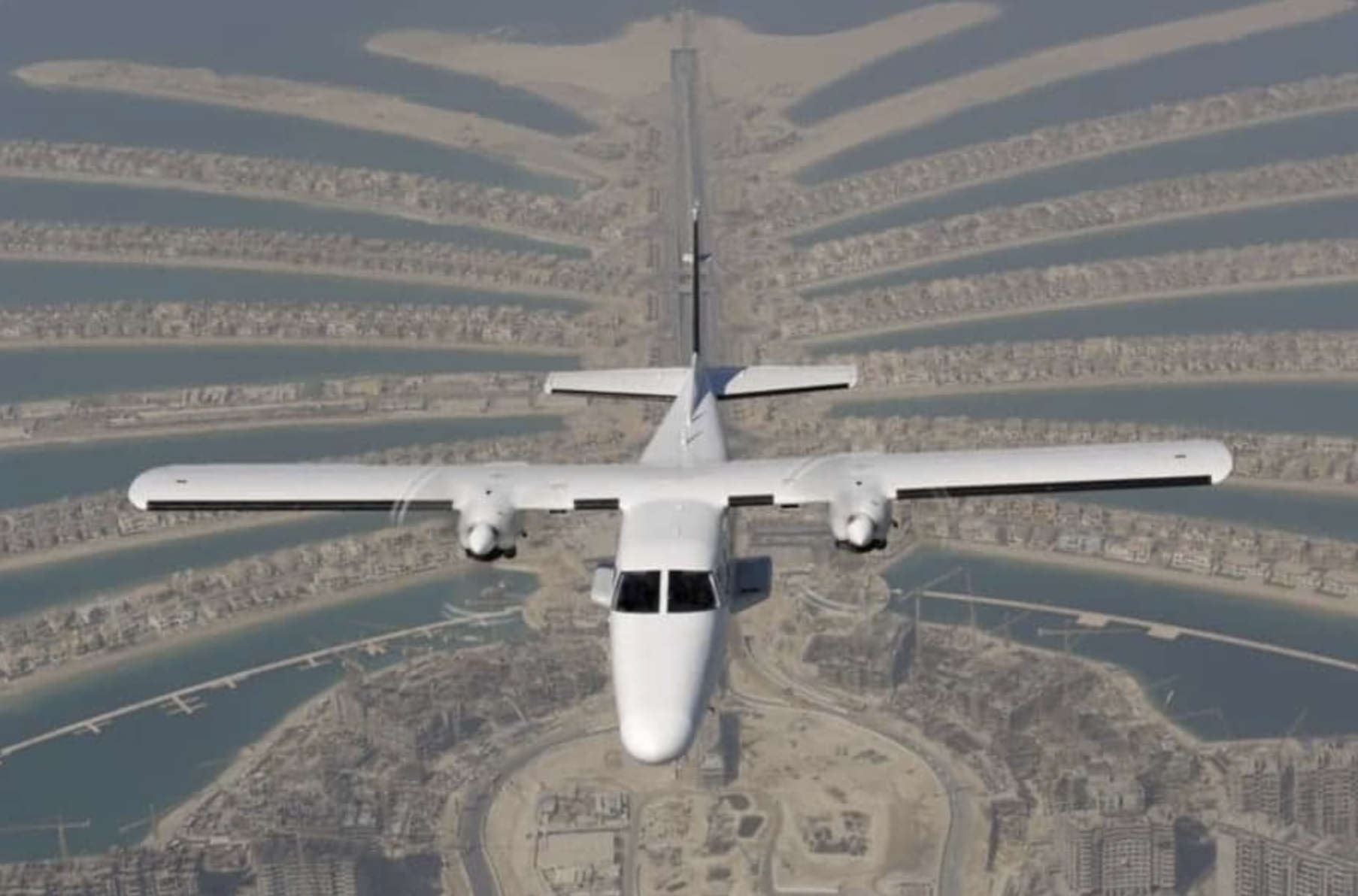

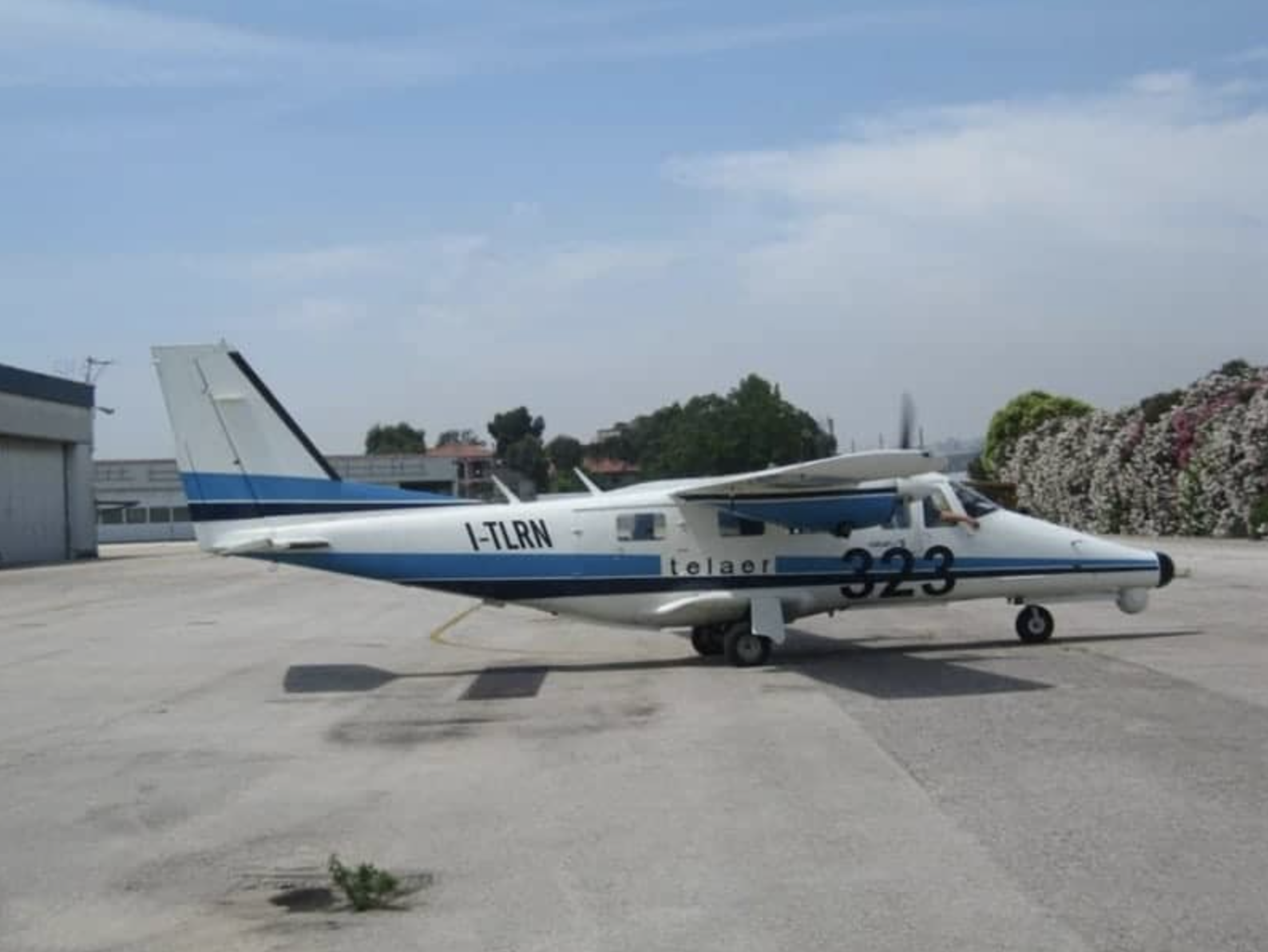







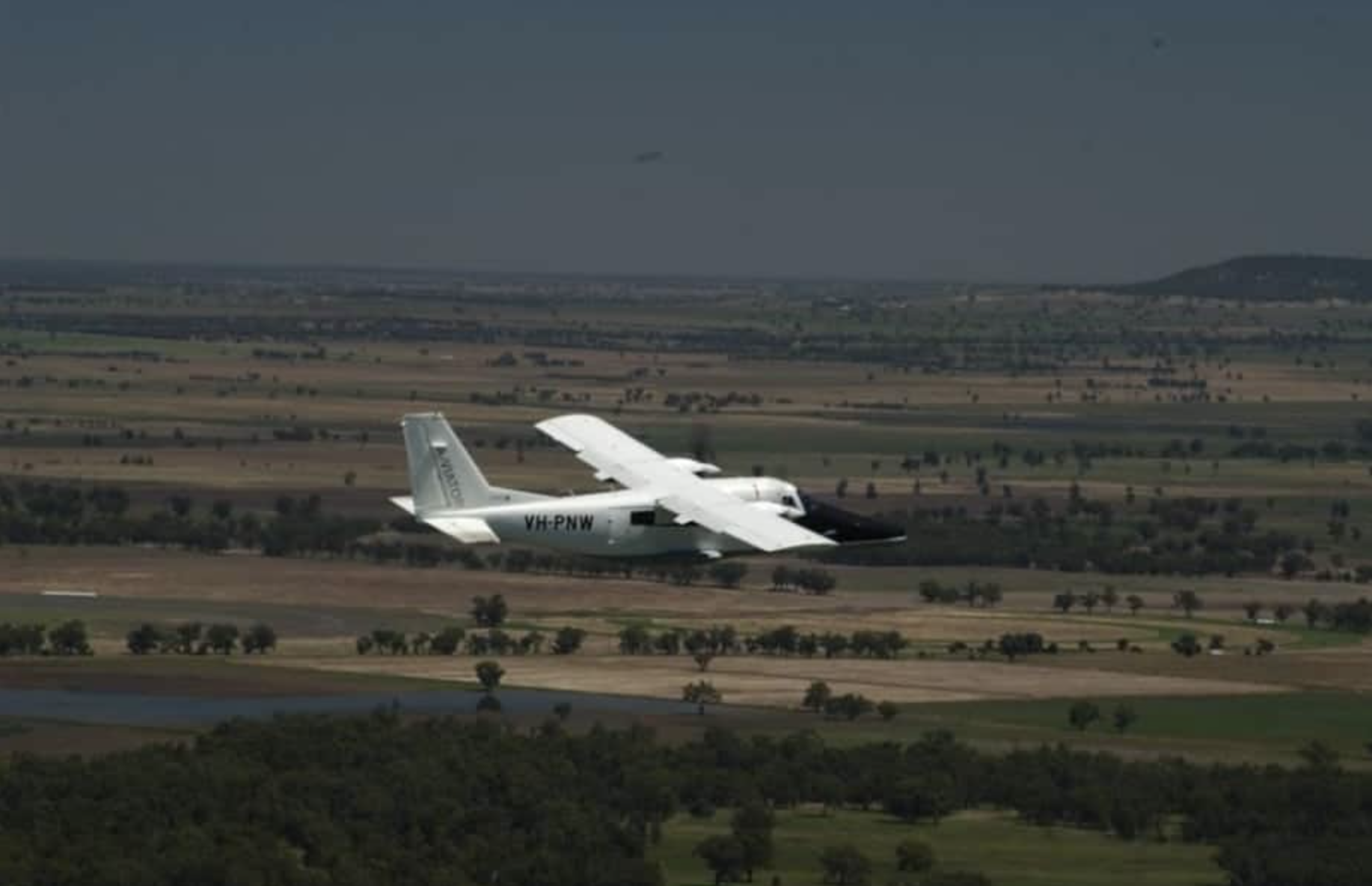


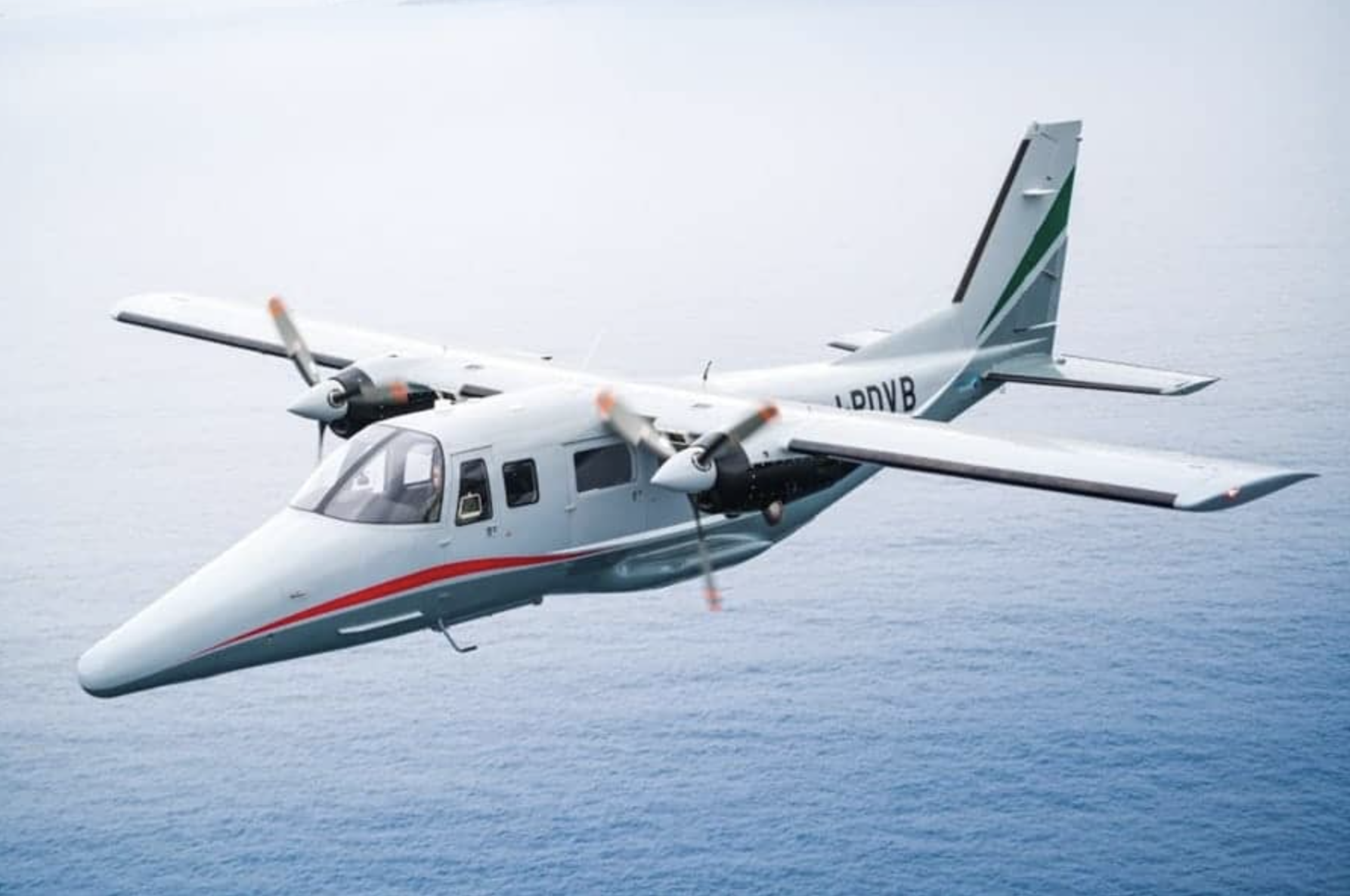


PERFORMANCE SPECS
INTERNAL
HIGH DENSITY
11 seats
baggage compartment
volume .5 m3 – 17.66 ft3
COCKPIT
The A-Viator has dual controls but can be flown without any restrictions with one or two pilots. The pilot doors on the forward right and left hand side of the fuselage offer easy access to the cockpit.
The avionic suite is modern yet conservative to complement the utilitarian aspects of the aircraft with its modern deployment aspirations.
EXTERNAL
The fuselage is non-pressurized and of all metal construction. Seats and cargo are anchored by two sets of double tracks which run the entire length of the floor.
Four doors are available:
2 pilot doors located on the forward right and left hand side
a main passenger door located on the left hand side
a fourth large double door, located on the aft right hand side, can be used by passengers or for loading cargo.
WING SPAN
12.00 m
39.37 ft
WING AREA
18.60 m2
200.23 ft2
OVERALL LENGTH
11.27 m
36.97 ft
OVERALL HEIGHT
3.63 m
11.91 ft
COMBI
6 seats
cargo volume 2.5 m3 – 88 ft3
DESIGN FEATURES AND INFORMATION
INTRO
The new P68C is available with two 200 hp Lycoming IO-360-A1B6 normally aspirated engines. These engines drive Hartzell constant speed, full feathering propellers.
PERFORMANCE
The exceptionally clean lines of the P68C are the result of many hours of wind tunnel testing and deliver an optimum performance in terms of maximum speed, rate of climb and endurance.
SAFETY
Painstaking work on the part of an ideal designer / test pilot combination have produced truly remarkable and benign handling characteristics particularly at low speeds or in the unlikely event of an engine failure. The forward position of the pilot in relation to the wing provides excellent rearward visibility in turns, making for greater safety in crowded airspace. With the optional de-icing equipment installed on the P68C has been operated day and night with safety and regularity, from severe winter conditions over the North Sea and throughout Northern Europe to the harsh environments of the continents of Africa and Australia.
ECONOMY
The P68 Series has one common feature, economy. The economy of the aircraft is the result of the low operating costs and of the low maintenance costs which are a direct result of the aircraft construction simplicity and low fuel consumption and replacement costs of its power plants. The rugged maintenance free, leaf spring fixed undercarriage, lack of complicated systems and unsurpassed accessibility of servicing points reduce maintenance to the minimum. The high wing configuration enables the engine intakes and propeller tips to be kept well clear of the ground thereby reducing dust ingestion and stone denting to the minimum and extending engine and propeller service lives to the maximum.
CUSTOMER SUPPORT
All the OEM parts installed on the P68C series aircraft have been reviewed and updated to guarantee quick parts availability. With full production resumed also airframe parts availability is guaranteed.
MATERIAL CHOICE
While it can be true that composite aircraft have no rivets, at Vulcanair we believe that there are many advantages in aluminium construction. The first advantage is weight, compared to a similar structure made of aircraft certified composite materials The second are the known and well documented aging and fatigue qualities of aluminium structure together with the ease of repair.
AIRBORNE SUV CAPABILITIES
The P68C can truly be considered an airborne SUV The difference between the Vulcanair and any aircraft which may be comparable to it is that the P68C has two engines and these two engines are powerful enough and reliable. No other light twin in the market offers three rows of removable seats, more than 65 cubic feet of internal volume including 20 cubic feet of cargo space allowing a max load in the cargo compartment of 400 lbs. The P68C flexible space allows the pilot to load the aircraft in many ways that can satisfy many different mission profiles.
STYLE
Let’s not forget that the P68 Series is designed and manufactured in Italy. Look at the clean lines of the aircraft and you will notice the difference.
DOWNLOADS
COMMUTER
10 seats
baggage compartment
volume .75 m3 – 26.5 ft3
SPECIAL MISSION
4 Seats
MEDIVAC
2 stretchers – 2 assistants
CARGO
cargo volume 6.5 m3 – 230 ft3
WHEEL TRACK
2.17 m2
7.12 ft
WHEEL BASE
3.51 m
11.52 ft
PROP CLEARANCE
0.75 m
2.46 ft











